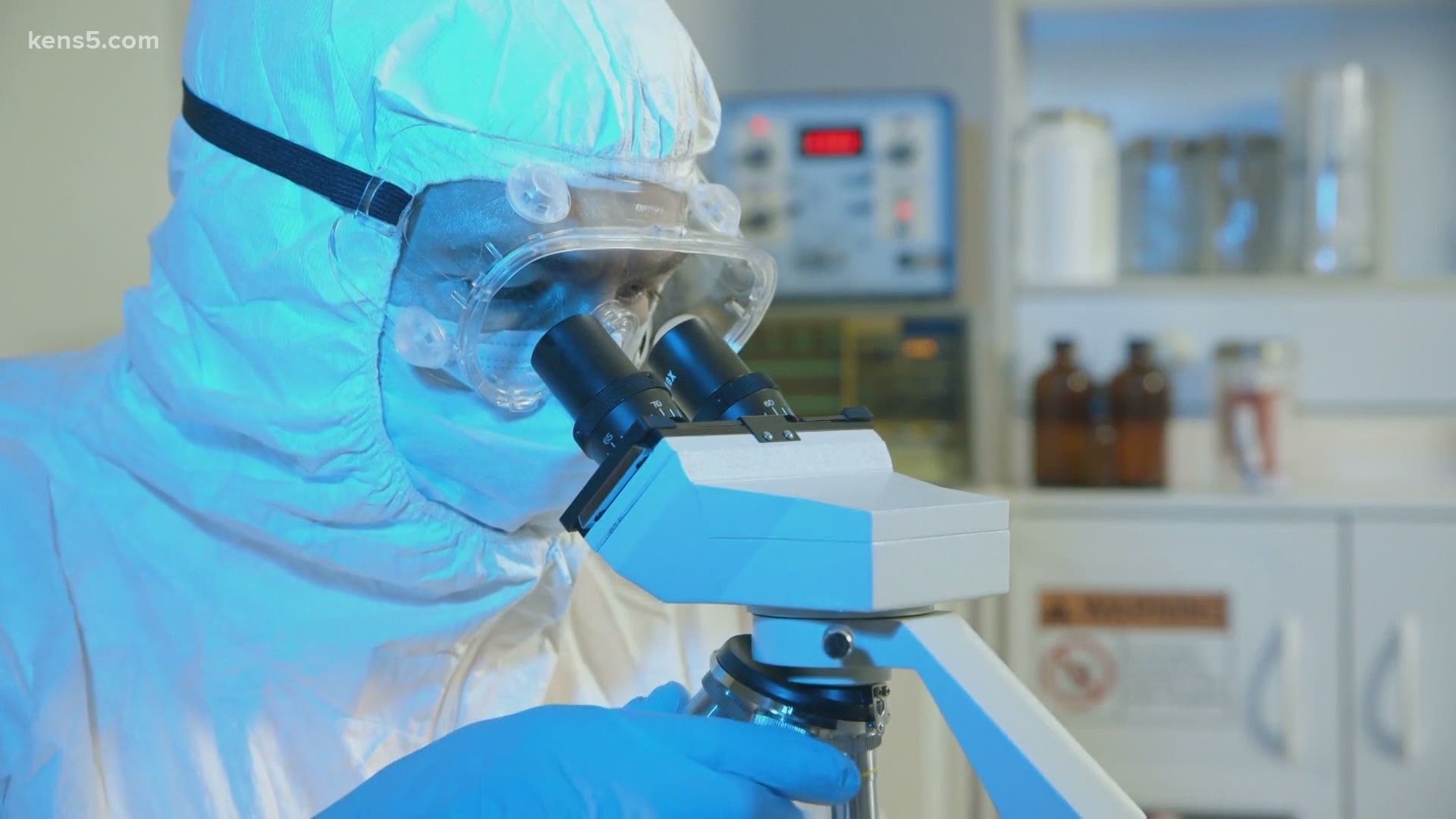SAN ANTONIO — From start to finish, vaccine development is a lengthy process using science experiments, animal studies, and human studies. We're finding out just how long it normally takes to get a vaccine, and the reasons why this one may come much faster than normal.
When people talk about trials for vaccines, there are generally three phases.
Phase one studies use a very small number of people, about 20 to 50. "You give different doses of either a vaccine or medication, and make sure that it's safe, and people don't have a lot of side effects. And when do you start to see some of those side effects, you have a good idea of what dose is safe to take," said Dr. Jason Bowling, the Director of Hospital Epidemiology for the University Health System, and Associate Professor of Medicine for UT Health San Antonio.
Phase two studies use a larger number of people, usually a few hundred. Dr. Bowling told us, "You give them the vaccine, and you look to see how effective the vaccine, or the medication is, and again you are studying that safety signal. Are they having any side effects? These studies have more people and take more time than the phase one studies."
Phase three studies are the longest, using one group of people who get the actual vaccine, and compare to a group getting a placebo, and looking at side effects in both. Dr. Bowling said, "That's where we have the highest number of people that we are studying with the vaccine to make sure, again, that it's effective, but also that it's safe."
The last thing you want to do is rush vaccine development. Dr. Bowling added, "If we rush a vaccine and don't take the normal process of going through phase 1 through phase 3 trials, what you worry about is you may have something that looks good in a lab experiment, but you are not sure how effective it is in people."
But because of the pandemic's global scale, vaccine developers have started producing before the trials are even over. Dr. Bowling said, "That usually happens afterwards, but in an effort to speed up the process, they are producing the vaccine right now. So if the data comes out from the trial showing as effective and safe, there will be vaccine product available."
During the 1918 flu pandemic, there wasn't a vaccine for 15 years. And groups that had mass gatherings had higher numbers of deaths. So until we get a vaccine likely in the beginning of 2021, and for several months after, we are still recommended to maintain social distancing and keep wearing masks.
For more information about family health call (210) 358-3045. You can also find the rest of Wear The Gown stories, click here.
Related links on KENS 5:

